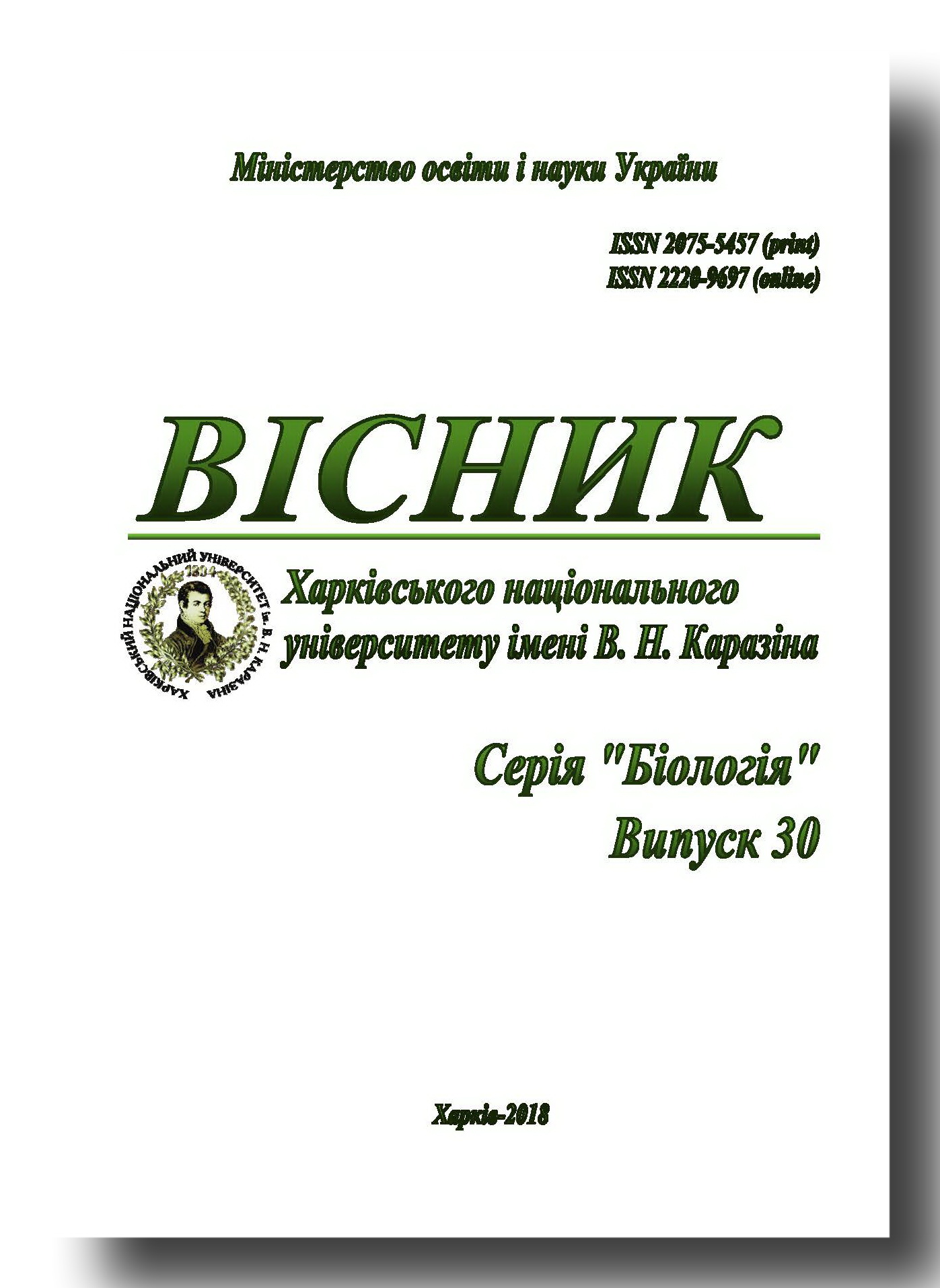Ферменти редокс-циклу глутатіону як потенційні мішені гем-опосередкованого окислення при гемолізі: аналіз in silico
Анотація
Редокс-гомеостаз глутатіону (g-глутамілцистеїнілгліцину) в еритроцитах людини залежіть від активності глутатіонпероксидази (GPX1, КФ 1.11.1.9), глутатіонредуктази (GSR, КФ 1.8.1.7), глутаредоксину 1 (GRX1) і NADPH-генеруючих ферментів пентозофосфатного шляху, глюкозо-6-фосфатдегідрогенази (G6PD, КФ 1.1.1.49) і 6-фосфоглюконатдегідрогенази (PGD, КФ 1.1.1.44). Накопичення вільного гему при гемолізі може вплинути на активність протеїнів, у зв'язку з чим був проведений in silico аналіз структури ферментів редокс-циклу глутатіону з метою виявлення можливих гем-зв'язуючих сайтів та залишків цистеїну, здатних до окислення. Анотації протеїнів були взяті з UniProt. Докінг гему проведений у PatchDock з RMSD кластерування 1,5 Å і з використанням PDB структур протеїнів та гему. Потенціал окислення цистеїнів оцінювався за допомогою Cy-Preds. Для мономерів GSR (1DNC, 3DJJ, 3DK9, 2GRT) та димерів (3SQP, 2GH5) передбачено зв’язування гему через His81 біля дисульфідного зв’язку між ланцюгами та через Cys59 біля сайтів зв’язування FAD і GSSG. Гем-зв'язуючі сайти у GPX1 (2F8A) і GPX3 (2R37) також виявлені у ділянці між ланцюгами та у активному центрі (His80). Зв’язування гему з GLRX1 (4RQR) передбачено майже виключно поблизу N-кінця, незважаючи на доступність всіх цистеїнів разом з CPYC мотивом у активному центрі. В мономері G6PD (2BH9, 5UKW) гем-зв'язуючі ділянки виявлені у сайті зв’язування NADP+ та в a-спиралі 437–447, розташованій у димері 2BHL на поверхні між ланцюгами. Гем стикувався до PGD (4GWG, 4GWK) у ділянці зв’язування субстрату біля His187. Таким чином, активні центри ферментів та ділянки взаємодії ланцюгів були виявлені в більшості варіантів докінгу гему. У кожному протеїні виявлено від одного (у PGD) до трьох (у GSR) схильних до окислення цистеїнів, в тому числі серед потенційних сайтів зв’язування гему. Опосередкований гемом окислювальний ефект на ферменти редокс-циклу глутатіону у еритроцитах і плазмі крові може явитись важливим механізмом посилення гемолізу при стресі та патології.
Завантаження
Посилання
Andersen H.R., Nielsen J.B., Nielsen F., Grandjean P. Antioxidative enzyme activities in human erythrocytes // Clin. Chem. – 1997. – Vol. 43, no. 4. – P. 562-568.
Chiabrando D., Vinchi F., Fiorito V. et al. Heme in pathophysiology: a matter of scavenging, metabolism and trafficking across cell membranes // Front. Pharmacol. – 2014. – Vol. 5. – Article 61 (24 pages).
Handala L., Domange B., Ouled-Haddou H. et al. DHEA prevents ribavirin-induced anemia via inhibition of glucose-6-phosphate dehydrogenase // Antiviral Res. – 2017. – Vol. 146. – P. 153–160.
Hanschmann E.M., Godoy J.R., Berndt C. et al. Thioredoxins, glutaredoxins, and peroxiredoxins--molecular mechanisms and health significance: from cofactors to antioxidants to redox signaling // Antioxid. Redox Signal. – 2013. – Vol. 19, no. 13. – P. 1539-1605.
Immenschuh S., Vijayan V., Janciauskiene S., Gueler F. Heme as a target for therapeutic interventions // Front Pharmacol. – 2017. – Vol. 8. – Article 146 (15 pages).
Liu R., Hu J. HemeBIND: a novel method for heme binding residue prediction by combining structural and sequence information // BMC Bioinformatics. – 2011. – Vol. 12. – P. 207.
Lushchak V.I. Glutathione homeostasis and functions: potential targets for medical interventions // J. Amino Acids. – 2012. – Vol. 2012. – Article ID 736837 (26 pages).
Mense S.M., Zhang L. Heme: a versatile signaling molecule controlling the activities of diverse regulators ranging from transcription factors to MAP kinases // Cell Res. – 2006. – Vol. 16, no. 8. – P. 681–692.
Pandey K.B., Rizvi S.I. Biomarkers of oxidative stress in red blood cells // Biomed. Pap. Med. Fac. Univ. Palacky Olomouc Czech. Repub. – 2011. – Vol. 155, no. 2. – P. 131-136.
Schneidman-Duhovny D., Inbar Y., Nussinov R., Wolfson H.J. PatchDock and SymmDock: servers for rigid and symmetric docking // Nucl. Acids. Res. – 2005. – Vol. 33. – P. W363–W367.
Smith L.J., Kahraman A., Thornton J.M. Heme proteins – diversity in structural characteristics, function, and folding // Proteins. – 2010. – Vol. 78, no. 10. – P. 2349-2368.
Soylu İ., Marino S.M. Cy-preds: An algorithm and a web service for the analysis and prediction of cysteine reactivity // Proteins – 2016. – Vol. 84. – P. 278–291.
Zhang Y., Skolnick J. TM-align: A protein structure alignment algorithm based on TM-score // Nucleic Acids Research. – 2005. – Vol. 33. – P. 2302–2309.
Автори залишають за собою право на авторство своєї роботи та передають журналу право першої її публікації на умовах ліцензії Creative Commons Attribution License 4.0 International (CC BY 4.0), яка дозволяє іншим особам вільно розповсюджувати опубліковану роботу з обов'язковим посиланням на авторів оригінальної роботи.




